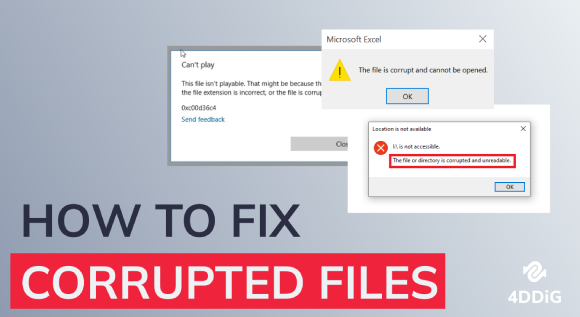Data Recovery and AI: What's the Best AI Data Recovery
In the ever-evolving landscape of digital information, data has become the lifeblood of businesses and individuals alike. The significance of data cannot be overstated, and with this increased importance comes the need for robust ai data recovery solutions. As the complexity and volume of data continue to grow, traditional data recovery methods may fall short of effectively restoring lost or corrupted information. It is where ai networks data recovery steps in, revolutionizing the field of data recovery with its unparalleled capabilities.
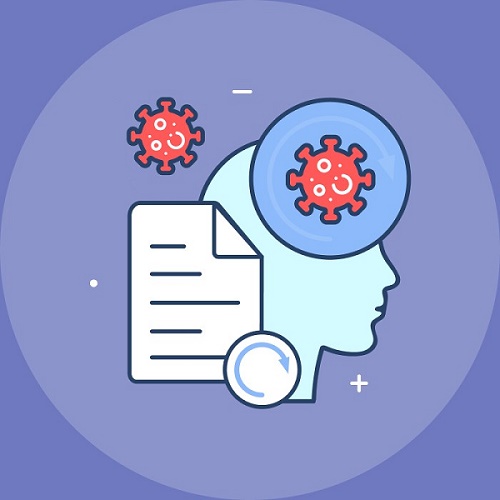
Part 1: How Can AI Prevent Data Loss?
Data loss is a pervasive and persistent challenge in the digital age, and its consequences can be severe for individuals and organizations alike. While traditional data loss prevention methods focus on reactive measures, Artificial Intelligence (AI) introduces a paradigm shift by enabling proactive strategies to mitigate the risk of data loss. Here's an in-depth exploration of how AI can effectively prevent data loss:

- Predictive Analytics: One of the primary ways ai and data recovery contributes to preventing data loss is through predictive analytics. Machine learning algorithms analyze historical data patterns, user behavior, and system activities to identify potential risks.
- Real-time Monitoring: AI-powered systems excel in real-time monitoring of data activities. They continuously analyze data flows, network traffic, and user interactions to detect any unusual patterns or suspicious activities. In the context of data loss prevention, this means swift identification of unauthorized access, abnormal data transfers, or potential malware threats.
- Behavioral Analysis: AI's capability to conduct behavioral analysis plays a crucial role in preventing data loss caused by insider threats or human errors. Machine learning models can establish baseline behavior for users and systems, learning what is considered normal. Deviations from this baseline, such as an employee accessing sensitive data they don't typically handle, can trigger alerts.
- Automated Security Measures: AI enables the automation of security measures based on real-time analysis. For example, if an AI system detects a potential malware attack, it can automatically isolate the affected system, preventing the spread of the threat and minimizing data loss.
- Encryption and Anonymization: AI is instrumental in enhancing data protection through advanced encryption and anonymization techniques. By leveraging machine learning, encryption processes can be optimized to secure sensitive data without compromising system performance.
- Proactive System Maintenance: AI-driven predictive maintenance is not limited to hardware components but extends to the overall health of data storage and processing systems. By analyzing patterns of system failures and degradation, AI can predict potential issues before they cause data loss.
- User Education and Training: AI for data recovery can contribute to preventing data loss by enhancing user education and training programs. Machine learning algorithms can identify patterns of risky user behavior and tailor training materials accordingly.
Part 2: Top 3 AI Data Backup and Recovery
In the realm of AI-driven data recovery, several solutions stand out. Each offers unique features and benefits to cater to different user needs. Let's explore the top three AI data recovery tools and delve into their distinctive characteristics.
Top 1: Use AI to Recover Lost Data via 4DDiG Data Recovery
4DDiG Windows Data Recovery emerges as a leading artificial intelligence and data recovery solution for retrieving lost data. This software employs advanced algorithms to scan storage devices thoroughly, identifying and recovering files with exceptional precision.
Main Features
Deep Scan Technology: 4DDiG utilizes cutting-edge deep scan technology to delve into the core of storage devices, ensuring no fragment of lost data goes unnoticed.
Wide File Format Support: Whether it's documents, images, videos, or other file types, 4DDiG can recover a diverse range of data formats.
-
Pros

-
Cons

-
- Users praise 4DDiG for its impressive success rate in recovering lost data, even in challenging scenarios.
- The software's intuitive interface makes it accessible to users with varying levels of technical expertise.
-
- While 4DDiG offers a free version, its capabilities are somewhat restricted compared to the paid options.
Secure
Download
Secure
Download
User Experience
Users commend 4DDiG for its efficiency and reliability, emphasizing its role in salvaging critical data in dire situations. The software's straightforward interface and powerful recovery capabilities make it a top choice for those seeking an artificial intelligence data recovery solution.
-
You proceed by downloading the Tenorshare 4DDiG Data Recovery Software onto your PC or laptop. Following the download, complete the installation process to ensure the software is ready for use

-
Once you've successfully installed the software, go ahead and launch it. Upon opening, you'll encounter an interface displaying various drives (C, D, E, etc.). Identify the drive where you suspect file loss, then initiate the scanning process by simply clicking on "Scan."

-
The 4DDiG Data Recovery Software conducts a thorough scan to locate lost data comprehensively. Upon scan completion, you'll be presented with deleted files. Select the needed files and proceed by clicking the "Recover" button. It's crucial to save these recovered files to a different drive to prevent accidental overwriting.

Top 2: CommVault
CommVault stands out as a comprehensive data management solution, leveraging AI to enhance its data recovery capabilities. It offers a unified platform for backup, recovery, and archiving, making it a go-to choice for organizations with diverse data management needs.
Main Features
Intelligent Data Protection: CommVault employs AI algorithms to intelligently prioritize and protect critical data, ensuring a swift recovery process when needed.
Scalability: With support for a wide range of storage environments, CommVault is scalable to accommodate the evolving data requirements of businesses.
-
Pros

-
Cons

-
- The integration of backup, recovery, and archiving functions into a single platform streamlines data management processes.
- Automation features powered by AI simplify complex data management tasks, reducing the workload on IT teams.
-
- Some users may find the platform's extensive features challenging to navigate initially.
User Experience
Users appreciate CommVault for its all-encompassing approach to data management. The seamless integration of AI-driven automation and robust recovery features contributes to a positive user experience, particularly for businesses seeking a unified solution.
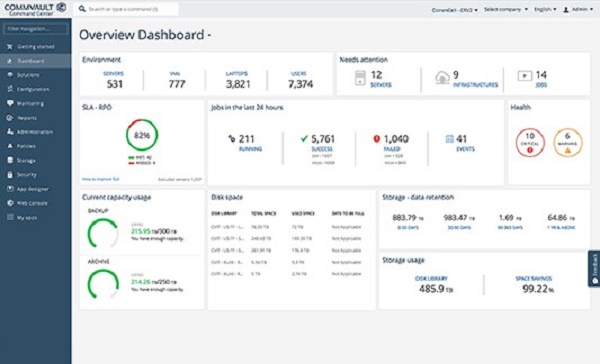
Top 3: Unitrends
Unitrends offers a comprehensive data protection and backup solution enriched with AI capabilities to enhance its effectiveness. This platform caters to businesses of all sizes, providing a reliable safeguard against data loss.
Main Features
Predictive Analytics: Unitrends utilizes predictive analytics to identify potential issues before they escalate, ensuring proactive data protection.
Cloud Integration: With seamless integration with cloud storage, Unitrends facilitates secure offsite backups and disaster recovery.
-
Pros

-
Cons

-
- Users can tailor backup and recovery policies to align with their specific data protection requirements.
- The platform's deduplication capabilities optimize storage utilization without compromising data integrity.
-
- Some users find Unitrends' pricing structure complex, requiring careful consideration to ensure cost-effectiveness.
User Experience
Unitrends garners positive reviews for its reliable data protection features and user-friendly interface. The incorporation of AI-driven predictive analytics adds a layer of proactive defense against potential data loss, enhancing the overall user experience.
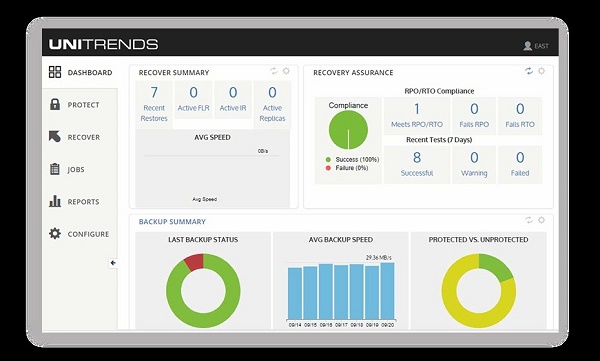
Part 3: The Impact of Artificial Intelligence on Data Recovery
The integration of Artificial Intelligence (AI) into data recovery processes has revolutionized the efficiency and effectiveness of retrieving lost or corrupted data. Here's a concise overview of the key impacts:
- Speed and Efficiency:
AI-powered tools excel in rapid data analysis, significantly reducing the time required for data recovery. - Adaptability to Varied Data Formats:
AI algorithms can recognize and recover a diverse range of data formats, ensuring comprehensive retrieval capabilities. - Advanced Search and Identification:
AI enhances search functionalities, enabling quick and precise location of specific data within complex storage systems. - Predictive Analysis for Data Reconstruction:
AI's predictive capabilities improve the accuracy of data reconstruction, even with fragmented or partially corrupted data. - Reduced False Positives:
Machine learning reduces the likelihood of false positives, improving the accuracy of recovery results. - Continuous Learning and Improvement:
AI adapts to new data patterns and technologies, ensuring effective data recovery in dynamic digital landscapes. - Enhanced Error Correction:
AI identifies and corrects errors during the recovery process, improving the integrity of retrieved information. - Automation of Repetitive Tasks:
AI automates scanning and recovery initiation, accelerating the process and reducing the workload on IT professionals. - Improved Scalability:
AI-driven solutions efficiently scale to handle larger datasets, ensuring robust data recovery in the face of increasing complexities. - Proactive Data Protection Measures:
AI's proactive analysis enables organizations to implement preemptive measures, reducing the frequency and severity of data loss scenarios.
Part 4: How Can You Avail Such AI-Driven Data Storage and Backups?
Implementing AI-driven data storage and backups involves a strategic approach. Businesses can start by assessing their data management needs and selecting a solution that aligns with their specific requirements. Choosing a reputable AI-powered data recovery tool, such as 4DDiG, CommVault, or Unitrends, provides a solid foundation. Integration into existing IT infrastructure, employee training, and ongoing monitoring are essential steps to maximize the benefits of AI-driven data storage and backups.
Part 5: FAQ
Q 1: Can AI be used to collect data?
Yes, AI can be utilized to collect and analyze data. Machine learning algorithms can sift through vast amounts of information to identify patterns, trends, and anomalies, providing valuable insights for businesses and individuals.
Q 2: How is AI used in data protection?
AI is employed in data protection to enhance security measures, identify potential threats, and proactively respond to vulnerabilities. Machine learning algorithms can analyze user behavior, detect unusual patterns, and mitigate risks, contributing to a robust defense against data breaches.
Q 3: How is AI used to process data?
AI processes data through advanced algorithms that can learn, adapt, and make predictions based on patterns within the data. Machine learning and deep learning techniques enable AI systems to analyze and interpret data, extracting meaningful information and insights.
Conclusion
The integration of AI into data recovery processes marks a significant advancement in the field. The top AI-driven data recovery tools, such as 4DDiG Windows Data Recovery, CommVault, and Unitrends, showcase the power of artificial intelligence in efficiently restoring lost or corrupted data. The impact of AI on data recovery extends beyond reactive measures, with predictive analytics and proactive protection measures becoming integral components of modern data management strategies. As businesses and individuals increasingly rely on digital data, embracing data recovery using artificial intelligence is not just a choice but a necessity in ensuring the integrity and availability of crucial information.
💡 Summarize with AI:
You May Also Like
- Home >>
- Windows Recovery Solutions >>
- Data Recovery and AI: What's the Best AI Data Recovery


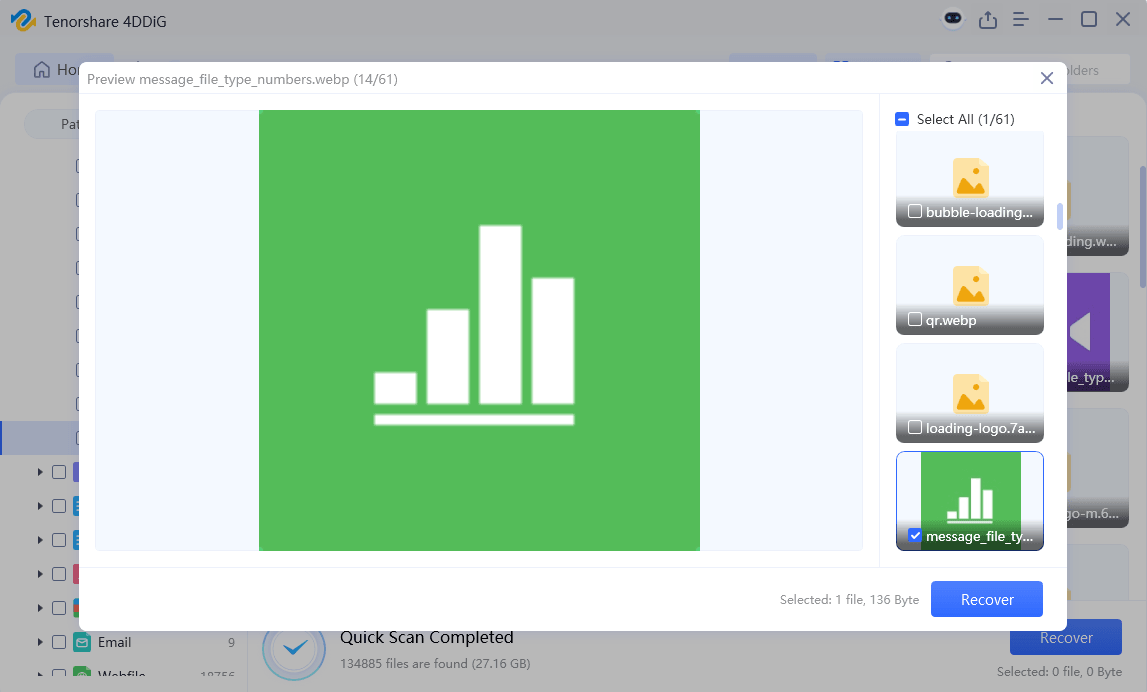
 ChatGPT
ChatGPT
 Perplexity
Perplexity
 Google AI Mode
Google AI Mode
 Grok
Grok





